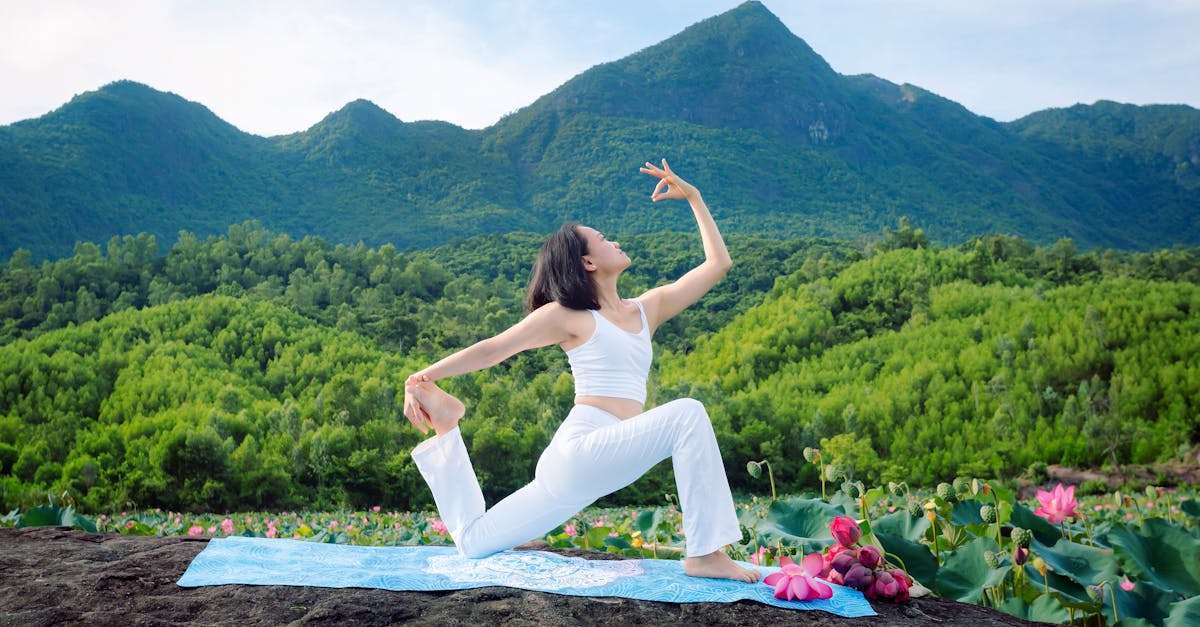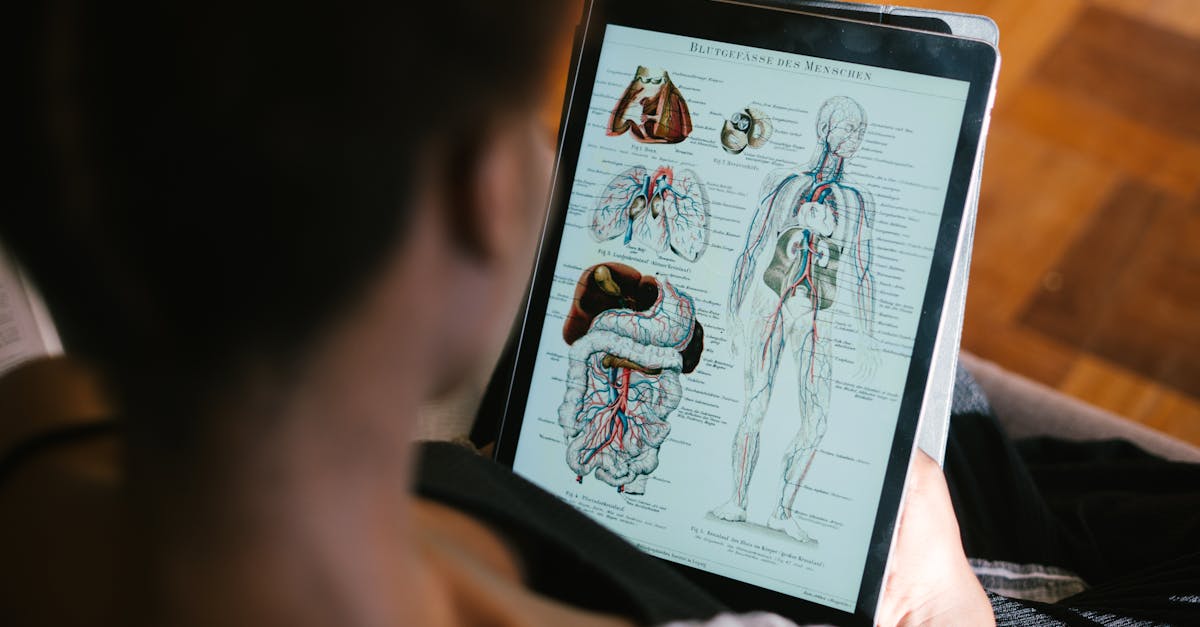|
In Short, holistic strategies for addressing posture-related pain involve comprehensive methodologies that recognize the intricate relationship between posture and various forms of discomfort. By integrating techniques such as Global Postural Reeducation, manual therapies, and self-care strategies, these approaches provide significant benefits, including alleviating symptoms and promoting long-term health. This methodology works by focusing on enhancing alignment and mobility, enabling individuals to reclaim their well-being through targeted solutions that lead to improved quality of life. |
Holistic strategies for addressing posture-related pain emphasize a comprehensive approach that targets the root causes of discomfort, rather than merely alleviating symptoms. By integrating techniques such as manual therapies, acupuncture, and movement education, individuals can enhance their overall spinal health and achieve lasting relief. Embracing an anti-inflammatory diet and adopting self-care practices further support this multifaceted strategy, promoting both physical alignment and emotional well-being. The combination of these elements fosters a deeper understanding of the body’s natural balance, allowing individuals to reclaim their vitality and function effectively in daily life.

Welcome to Pulse Align: Restoring Balance Through Gentle Recalibration
At Pulse Align, we understand the importance of achieving and maintaining an optimal posture for overall well-being. Our innovative approach utilizes gentle, imperceptible pulses to help your body restore its natural balance and posture. By promoting muscle tone symmetry, we facilitate the body’s inherent capacity to relax, often leading to a noticeable reduction in tension and discomfort.
A Natural Path to Wellness
Our focus is not on directly addressing discomfort or specific conditions; instead, we empower our clients by helping their bodies recalibrate naturally. This gentle method nurtures the body’s self-regulating processes, and many who engage with our services report feeling more comfortable and aligned in their day-to-day lives. Clients frequently experience a greater sense of well-being as their posture improves, fostering a deeper connection between the mind and body.
Personalized Experiences for Every Client
At Pulse Align, each client’s journey is unique, and we pride ourselves on providing personalized experiences that cater to individual needs. Numerous testimonials reflect the transformative effects of our approach, with clients noting significant improvements in areas such as neck tension, back alignment, and overall posture. Families have found our services to be a holistic addition to their wellness journey, creating a supportive environment that encourages collective growth.
Discover Pulse Align Today!
We invite you to explore the revitalizing benefits of our services in cities such as La Prairie, Mont-Royal, and Terrebonne. Visit the Pulse Align website to learn more about how we can support your journey. Our safe, non-invasive, and family-friendly approach ensures that everyone, including children and expectant mothers, can enjoy the benefits of Pulse Align. Book a consultation today and take the first step toward improved muscle tone symmetry and balance.
Medical Disclaimer
The services provided by Pulse Align complement, but do not replace, medical care. Clients are encouraged to maintain communication with their healthcare team for any medical considerations. Any symptom relief experienced is simply a natural outcome of the body’s capacity to restore balance, not a direct result of our interventions.
- Global Postural Reeducation: Targets alignment issues through a series of corrective exercises.
- Manual Therapies: Includes massage and chiropractic adjustments to relieve tension and improve posture.
- Acupuncture: Utilizes fine needles to stimulate healing and alleviate pain in specific areas.
- Anti-Inflammatory Diet: Focuses on nutrition that reduces inflammation and supports better bodily function.
- Functional Movement Training: Encourages exercises that enhance muscle balance and core strength.
- Mindfulness Practices: Incorporates relaxation techniques to improve mental awareness of posture.
- Neuromodulation: Non-invasive techniques to adjust the body’s response to pain signals.
- Community Support: Engaging with groups for motivation and shared strategies in managing posture health.

Posture-related pain is a common issue that many individuals encounter, often stemming from daily habits and an imbalance in body alignment. This article will explore holistic strategies designed to address these concerns through a comprehensive approach that considers physical, nutritional, and emotional components. By integrating various techniques, such as exercise, self-care practices, and body awareness, individuals can achieve lasting relief from discomfort while promoting overall well-being.
Understanding Posture-Related Pain
Posture-related pain does not merely arise from awkward sitting or standing positions; rather, it is often associated with muscular imbalances and the body’s compensatory mechanisms. Simple adjustments in daily habits can promote better alignment and significantly reduce the discomfort experienced in areas such as the neck and lower back. Recognizing and addressing these underlying imbalances is essential for effectively managing posture-related pain.
Integrating Physical Activity
Regular physical activity plays a crucial role in mitigating posture-related pain. Engaging in core-strengthening exercises, such as Pilates or yoga, can help stabilize the spine and support proper alignment. These activities encourage flexibility and strength while promoting greater body awareness. Incorporating a variety of movements into daily routines enhances overall physical health and prevents discomfort caused by prolonged periods of inactivity.
Nourishing the Body Through Diet
A well-balanced, anti-inflammatory diet is a cornerstone of holistic health. Foods rich in antioxidants and omega-3 fatty acids can reduce inflammation and promote healing within the body. Incorporating fruits, vegetables, nuts, and fatty fish can bolster the body’s resilience to pain. Proper hydration and mindful eating also support overall health and aid the body in its natural recalibration processes.
Embracing Manual Therapies
Complementing physical activity and dietary choices, manual therapies offer invaluable assistance in addressing posture-related pain. Techniques such as chiropractic adjustments, massage therapy, and acupuncture can relieve tension and enhance muscle flexibility. These therapies target specific areas of discomfort, allowing the body to regain balance and improve overall function. Seeking out skilled practitioners can provide tailored treatments that align with individual needs.
Cultivating Mind-Body Connection
Fostering a deeper connection with one’s body is essential in addressing posture-related pain holistically. Practices such as meditation and mindfulness enhance body awareness, promoting relaxation and reducing stress. By learning to tune in to physical sensations and acknowledging emotional components tied to posture, individuals can modify their habits and responses, leading to improved alignment and overall health.
Utilizing Self-Care Strategies
Implementing effective self-care strategies empowers individuals to take an active role in managing their posture and relieving discomfort. Techniques such as regular stretching, maintaining ergonomic workspaces, and incorporating breaks throughout the day allow for better alignment and comfort during daily activities. Additionally, utilizing tools like posture-correcting devices or mobile apps can aid individuals in monitoring their progress and ensuring accountability.
Creating a Supportive Environment
Lastly, surrounding oneself with a supportive community fosters motivation and commitment to maintaining good posture. Whether through family, friends, or professional networks, shared experiences and insights can enhance the journey toward better alignment. Engaging in group activities such as classes or workshops can provide additional resources for learning and growth.
| Holistic Strategies | Focus on Wellness and Balance |
|---|---|
| Global Postural Reeducation | Aims to enhance overall body alignment through integrated movement patterns. |
| Anti-Inflammatory Diet | Emphasizes nutrition that nurtures body balance and reduces discomfort. |
| Manual Therapies | Includes gentle techniques that promote body awareness and symmetry. |
| Functional Movement Training | Encourages exercises that foster strength and stability for improved posture. |
| Mindfulness Practices | Supports relaxation and awareness to reinforce proper posture and reduce tension. |
| Self-Care Strategies | Empowers individuals to take charge of their wellness through proactive measures. |
| Movement Variability | Promotes diverse movement patterns to facilitate joint health and comfort. |
| Community Engagement | Builds supportive networks for shared experiences enhancing motivation for improvement. |
| Alternative Therapies | Utilizes practices like acupuncture that encourage natural recalibration and balance. |

Transformative Wellness Journey: Client Testimonials on Posture-Related Pain Recovery
Clients across various regions have shared inspiring stories about their experiences at Pulse Align, highlighting the profound impact of our holistic strategies on their well-being. In Terrebonne, one client expressed, “Since beginning my sessions at Pulse Align, I have noticed significant improvements in my alignment and overall comfort. The team’s approach truly supports the body’s natural ability to recalibrate itself.” This sentiment resonates with many who have sought relief and healing through our unique methodologies.
Another client from Mont-Royal emphasized the holistic nature of our services: “I was skeptical about how posture could affect my chronic pain, but the gentle approach at Pulse Align made a difference. I feel more balanced and energized, as if my body has finally understood how to reset itself naturally.” This illustrates how our integrated strategies foster a supportive environment for healing.
Residents of Châteauguay have also shared their positive transformations. One local remarked, “After several sessions, I’ve started to regain not just my physical balance but my confidence. The personalized attention I received made all the difference in my wellness journey.” This highlights the tailored experience offered to every client, addressing unique individual needs while promoting holistic recovery.
In the picturesque town of La Prairie, clients are embracing the idea of proactive self-care through our innovative therapies. A satisfied client noted, “The sessions have helped me understand how my posture plays a crucial role in my overall health. Pulse Align has transformed my pain management experience into a journey of self-discovery and healing.” This illustrates how our clients resonate with the supportive nature of our services.
Within Saint-Jérôme, individuals have found relief and renewed energy through their program. One client joyfully shared, “What stood out for me was how quickly I started to feel the benefits. I appreciate how Pulse Align helps my body relearn its natural state through gentle stimulation techniques.” It’s clear that our supportive relationships with clients extend beyond physical adjustments, nurturing emotional and mental growth, too.
Moreover, clients from Deux-Montagnes have experienced valuable changes as well. One local expressed, “With the help of Pulse Align, I learned how to integrate self-care strategies into my daily life. This has been a true turning point in my fight against chronic discomfort.” This demonstrates how our holistic methods can lead to sustainable wellness improvements.
Pulse Align remains dedicated to working alongside healthcare teams to ensure clients receive comprehensive support throughout their wellness journey. Our services are designed to enhance overall body function and promote balance, making them suitable for individuals across various locations, including Sainte-Marie and Chicoutimi.
To discover how Pulse Align can assist you or your loved ones in reclaiming wellness, explore our dedicated locations, including Our Clinics. Join the many who have experienced empowering journeys towards holistic wellness, embracing their bodies’ innate ability to recalibrate and restore balance.
Dr. Sylvain Desforges is a distinguished expert in osteopathy, naturopathy, and manual medicine. As the founding president of TAGMED clinics and the ACMA association, his career reflects a profound commitment to healthcare innovation and excellence. Dr. Desforges has dedicated his professional life to addressing the complexities of chronic pain management, particularly in relation to posture-related issues.
His holistic approach incorporates a range of therapeutic modalities, recognizing that pain is often not just an isolated symptom but a multitude of interconnected factors affecting an individual’s health. By emphasizing an integrative perspective, Dr. Desforges advocates for treatment plans tailored to the unique needs of each patient, focusing on the body’s inherent ability to heal itself when provided with the right tools and environment.
One of the cornerstones of his practice is the use of advanced technologies. Dr. Desforges integrates modalities such as spinal decompression, laser therapy, and shockwave therapy into his treatment regimens. These innovative approaches not only target specific areas of discomfort but also improve overall function and restore balance within the body. By utilizing technologies that are evidence-based and scientifically validated, Dr. Desforges aims to optimize his patients’ health and well-being.
Dr. Desforges’s commitment to evidence-based care is evident in his rigorous approach to treatment. Each patient undergoes a thorough assessment to identify the root causes of their pain, rather than simply addressing surface symptoms. This comprehensive evaluation process allows him to develop individualized treatment plans that address the specific postural issues at play. The incorporation of a holistic perspective ensures that not only the physical but also lifestyle factors, such as nutrition and exercise, are taken into consideration for a well-rounded approach to health.
By actively engaging patients in their recovery process, Dr. Desforges fosters a greater sense of ownership and empowerment. He understands that long-term success in alleviating pain associated with poor posture requires collaborative efforts between the practitioner and the patient. Therefore, he emphasizes the importance of patient education, encouraging individuals to develop their own self-care strategies for ongoing health maintenance.
Dr. Desforges operates TAGMED clinics in Montréal, Terrebonne, and Mont-Royal, offering accessible healthcare services to a diverse patient population. His clinics provide a welcoming environment where individuals can explore a range of treatment options designed to promote healing and restore functional movement. This patient-centered approach not only focuses on alleviating pain but also champions the promotion of a healthier lifestyle and overall wellness.
In the realm of posture-related pain, Dr. Desforges continues to lead the way, combining traditional methods with modern innovation to create an effective pathway toward recovery. His dedication to integrating various strategies reflects an unwavering commitment to enhancing the lives of those experiencing chronic pain. Through his work, he exemplifies the transformative potential of holistic strategies in managing posture-related challenges, paving the way for a healthier, more balanced future for his patients.
Neurovertebral Decompression Technology by TAGMED: Enhancing Chronic Pain Management
Mechanism of Action
The neurovertebral decompression technology offered by TAGMED operates through the application of controlled, progressive traction force on the spinal column. This technique creates increased space between the vertebrae, effectively alleviating the pressure on intervertebral discs and nerve roots. By expanding this space, the treatment facilitates improved fluid circulation in the affected area, which is crucial for healing and recovery. This process not only reduces inflammation but also significantly contributes to pain relief, as it addresses the root causes of discomfort.
Specific Benefits
One of the most remarkable aspects of TAGMED’s neurovertebral decompression is its non-invasive nature. This method effectively alleviates chronic pain and symptoms related to conditions such as herniated discs, disc bulging, and moderate to severe spinal or foraminal stenosis. By decreasing the pressure on nerve structures, this therapy optimizes fluid circulation around the discs, thus promoting a quicker healing process. Patients often experience enhanced quality of life as they recover from discomfort, regain mobility, and reduce their reliance on more invasive treatments.
Comparison with Other Treatments
When compared to other therapeutic approaches commonly utilized in managing pain, TAGMED’s neurovertebral decompression presents numerous advantages. Unlike traditional methods such as analgesics, corticosteroid injections, invasive surgeries, or conventional physiotherapy, neurovertebral decompression avoids invasive procedures and minimizes the risks associated with medication side effects. Many patients find that recovery through this method is often quicker, allowing them to return to their daily routines much faster than with alternative treatments. This solution not only focuses on pain relief but also addresses underlying structural issues, promoting long-term health.
Case Studies and Testimonials
Numerous success stories have emerged from patients who have embraced TAGMED’s neurovertebral decompression to combat their chronic pain and related symptoms. For instance, one patient suffered from a herniated disc and reported substantial long-lasting pain reduction after several sessions of decompression treatment. The functional improvement allowed this individual to resume important daily activities and enjoy a greater sense of overall well-being. Another testimonial highlights a patient diagnosed with spinal stenosis who experienced quicker recovery and reduced reliance on medications, showcasing the effective outcomes of this innovative treatment.
These real-life examples illustrate the tangible benefits of TAGMED’s neurovertebral decompression, supporting the notion that it stands as a valuable approach for managing chronic pain and enhancing patients’ lives.
In today’s fast-paced world, posture-related pain is an increasing concern that affects many individuals. Aiming to alleviate such discomfort requires a deeper understanding and application of holistic strategies. These approaches address not only the symptoms but also the root causes of pain, facilitating a comprehensive pathway to relief and wellness.
A foundational element of these holistic strategies is the recognition of the intricate connections between physical alignment, muscular function, and overall health. Techniques such as Global Postural Reeducation focus on improving posture through tailored exercises that align the body’s structure, which can lead to sustainable relief from chronic pain. These exercises empower individuals to become aware of their body mechanics, promoting self-correction and fostering long-term improvements.
Another essential aspect involves the incorporation of manual therapies such as massage, chiropractic care, and acupuncture. These methods provide immediate alleviation of discomfort, while also encouraging the body’s natural healing processes. Furthermore, an anti-inflammatory diet can complement these therapies, reducing tension and enhancing recovery by nurturing the body from the inside out.
In addition to physical practices, mindfulness techniques like yoga and meditation play a critical role in this holistic approach. They encourage body awareness and relaxation, which helps in relieving tensions associated with poor posture. Training the mind to recognize and respond to the body’s signals can significantly enhance the effectiveness of physical interventions.
Ultimately, embracing a variety of integrative methods creates a more profound and lasting impact on one’s overall wellness. By combining physical, nutritional, and psychological strategies, individuals can achieve a balanced body and mind, successfully addressing the complicated interplay of factors contributing to posture-related pain.

Do you suffer from a chronic condition that responds little or not at all to conservative treatments?
At Pulse Align, we introduce an innovative, non-invasive approach that champions the body’s natural ability to rebalance itself. Our unique service employs gentle, imperceptible pulses designed to support the body’s symbiotic relationship between posture and well-being. By promoting muscle tone symmetry, our method aids in alleviating common discomforts and enhancing overall functional capacity, providing a refreshing alternative to conventional methods that often fall short.
It’s important to note that at Pulse Align, our focus isn’t on individual discomforts or specific conditions. Rather, we build an environment that allows the body to regain its natural balance organically. Clients frequently report wonderful improvements in their overall comfort and posture as their bodies adapt to our gentle stimulation, creating a deeper sense of ease in their daily activities.
Our personalized approach to wellness differentiates Pulse Align. We celebrate the numerous success stories shared by clients who have experienced remarkable transformations, reporting relief from tension in areas like the neck and back, all while embracing a more vibrant quality of life. These experiences reflect the power of recalibrating muscle tone and achieving an improved sense of connection to one’s body, with an emphasis on holistic well-being.
We invite you to explore what Pulse Align can offer for you and your loved ones! Discover our multiple clinic locations, including La Prairie, Mont-Royal, Terrebonne, and more. Please note that our services complement existing healthcare support, encouraging you to remain engaged with your healthcare team. Our methodologies are safe for everyone in the family, including children and expectant mothers, ensuring a nurturing experience for all ages. To learn more and book a consultation, visit our website, Pulse Align. Embrace a positive step towards enhancing your wellness journey today!
Frequently Asked Questions
Posture Imbalance, body misalignment
- Is strengthening the deep muscles crucial?Yes, deep stabilizing muscles of the spine are vital for lasting alignment and a healthy posture.
- Are massages helpful for improving body alignment?Massage can relax tense muscles, improve circulation, and facilitate postural adjustments, especially combined with targeted exercises.
- What are common causes of postural imbalance?Causes include poor prolonged posture, a sedentary lifestyle, injuries, muscular or skeletal asymmetries, and carrying inappropriate loads.
- Does footwear choice affect posture?Absolutely, inappropriate shoes can alter foot biomechanics, affecting overall posture and body alignment.
- Can postural imbalance be measured objectively?Tools such as foot scans, gait analysis, posture photography, and certain apps can objectively assess alignment.
- Can stress contribute to postural imbalance?Yes, stress can increase muscle tension and encourage poor posture, thereby worsening postural imbalance.
- What is postural imbalance?Postural imbalance is an alteration in the body’s natural alignment, which may cause uneven weight distribution, muscle tension, and pain.
- Can dancing improve posture?Dancing, particularly ballet, encourages an upright posture, better balance, and increased body awareness.
- Can postural imbalance cause joint pain?Yes, poor alignment places uneven stress on joints, which can lead to inflammation, stiffness, and joint pain.
- Which exercises help improve body alignment?Core strengthening, planks, yoga, Pilates, and postural stretches are particularly beneficial.
Gabriel Dupuis knows that life’s pains can often be traced back to the way we sit, stand, and move. As a Posture Awareness Advocate at Pulse Align, he’s committed to showing readers how small adjustments in alignment can bring big relief. With a blend of empathy and evidence-based research, Gabriel translates the science of posture into practical steps that help ease discomfort, protect against injury, and restore natural balance. He believes that everyone deserves to feel strong, stable, and pain-free—and through his writing, he offers the guidance and encouragement to help readers reach that goal.
Medical Disclaimer
The information and advice provided on this site do not replace the advice, diagnosis, or treatment of a healthcare professional. Please note that the author of this article is neither a doctor nor a specialist in a medical specialty as defined by the Collège des médecins du Québec. Manual medicine, functional medicine, and sports medicine as described on this site exclude any medical treatment or diagnosis made by a doctor or medical specialist. Always consult your doctor for any medical questions. For more details, please read our complete Legal Notice.
References
- Xu, Z.-H., An, N., & Wang, Z.-R. (2022). Exercise-induced hypoalgesia following proprioceptive neuromuscular facilitation and resistance training among individuals with shoulder myofascial pain: Randomized controlled trial. JMIRx Med, 3(4), e40747. https://xmed.jmir.org/2022/4/e40747/
- Pillastrini, P., Rocchi, G., Deserri, D., Foschi, P., Mardegan, M., Naldi, M. T., Villafañe, J. H., & Bertozzi, L. (2016). Effectiveness of neuromuscular taping on painful hemiplegic shoulder: a randomised clinical trial. Disability and Rehabilitation, 38(16), 1603–1609. https://doi.org/10.3109/09638288.2015.1107631
- Patsaki, I., Gerovasili, V., Sidiras, G., Karatzanos, E., Mitsiou, G., Papadopoulos, E., Christakou, A., Routsi, C., Kotanidou, A., & Nanas, S. (2017). Effect of neuromuscular stimulation and individualized rehabilitation on muscle strength in intensive care unit survivors: a randomized trial. Journal of Critical Care, 40, 76–82. https://www.sciencedirect.com/science/article/pii/S0883944116304002
- Lee, J.-H., Chun, Y.-M., Kim, D.-S., Lee, D.-H., & Shin, S.-J. (2022). Effects of neuromuscular electrical muscle stimulation on the deltoid for shoulder function restoration after reverse total shoulder arthroplasty in the early recovery period: a prospective randomized study. Archives of Orthopaedic and Trauma Surgery, 143(6), 3037–3046. https://doi.org/10.1007/s00402-022-04515-0
- Kim, M.-S., Kim, S. H., Noh, S.-E., Bang, H. J., & Lee, K.-M. (2019). Robotic-assisted shoulder rehabilitation therapy effectively improved poststroke hemiplegic shoulder pain: a randomized controlled trial. Archives of Physical Medicine and Rehabilitation, 100(6), 1015–1022. https://www.sciencedirect.com/science/article/pii/S0003999319301601
- Lin, P., Yang, M., Huang, D., Lin, H., Wang, J., Zhong, C., & Guan, L. (2022). Effect of proprioceptive neuromuscular facilitation technique on the treatment of frozen shoulder: a pilot randomized controlled trial. BMC Musculoskeletal Disorders, 23(1), 367. https://doi.org/10.1186/s12891-022-05327-4
- Moroder, P., Karpinski, K., Akgün, D., Danzinger, V., Gerhardt, C., Patzer, T., Tauber, M., Wellmann, M., Scheibel, M., & Boileau, P. (2024). Neuromuscular Electrical Stimulation–Enhanced Physical Therapist Intervention for Functional Posterior Shoulder Instability (Type B1): A Multicenter Randomized Controlled Trial. Physical Therapy, 104(1), pzad145. https://academic.oup.com/ptj/article-abstract/104/1/pzad145/7327094
- İğrek, S., & Çolak, T. K. (2022). Comparison of the effectiveness of proprioceptive neuromuscular facilitation exercises and shoulder mobilization patients with Subacromial Impingement Syndrome: A randomized clinical trial. Journal of Bodywork and Movement Therapies, 30, 42–52. https://www.sciencedirect.com/science/article/pii/S1360859221002564
- Seitz, A. L., Podlecki, L. A., Melton, E. R., & Uhl, T. L. (2019). Neuromuscular adaptions following a daily strengthening exercise in individuals with rotator cuff related shoulder pain: a pilot case-control study. International Journal of Sports Physical Therapy, 14(1), 74. https://www.ncbi.nlm.nih.gov/pmc/articles/PMC6350670/
- Hagberg, M., Harms-Ringdahl, K., Nisell, R., & Hjelm, E. W. (2000). Rehabilitation of neck-shoulder pain in women industrial workers: a randomized trial comparing isometric shoulder endurance training with isometric shoulder strength training. Archives of Physical Medicine and Rehabilitation, 81(8), 1051–1058. https://www.sciencedirect.com/science/article/pii/S000399930090409X




